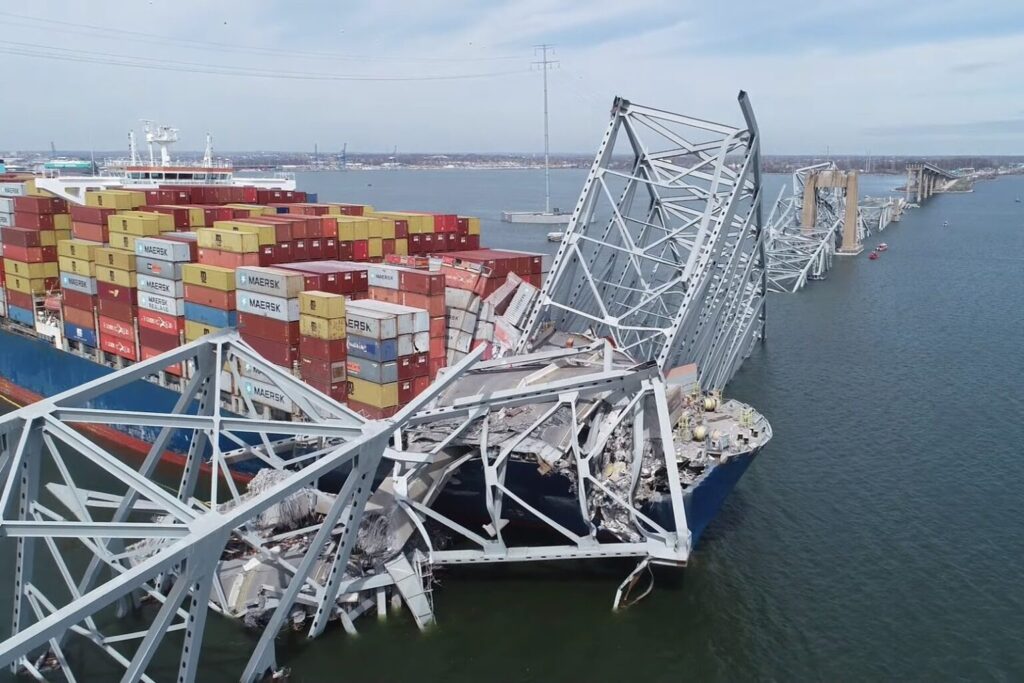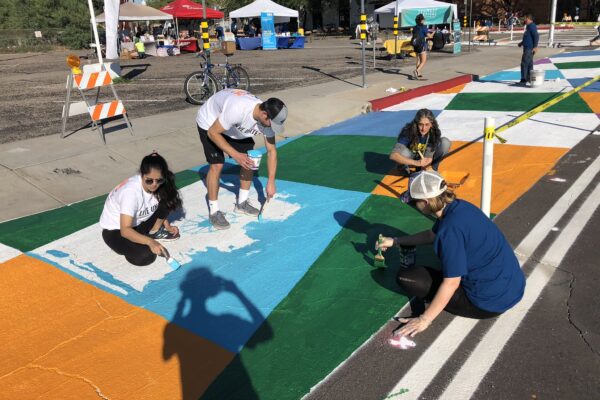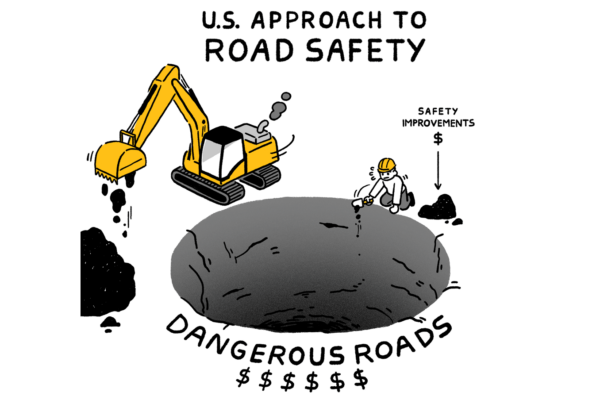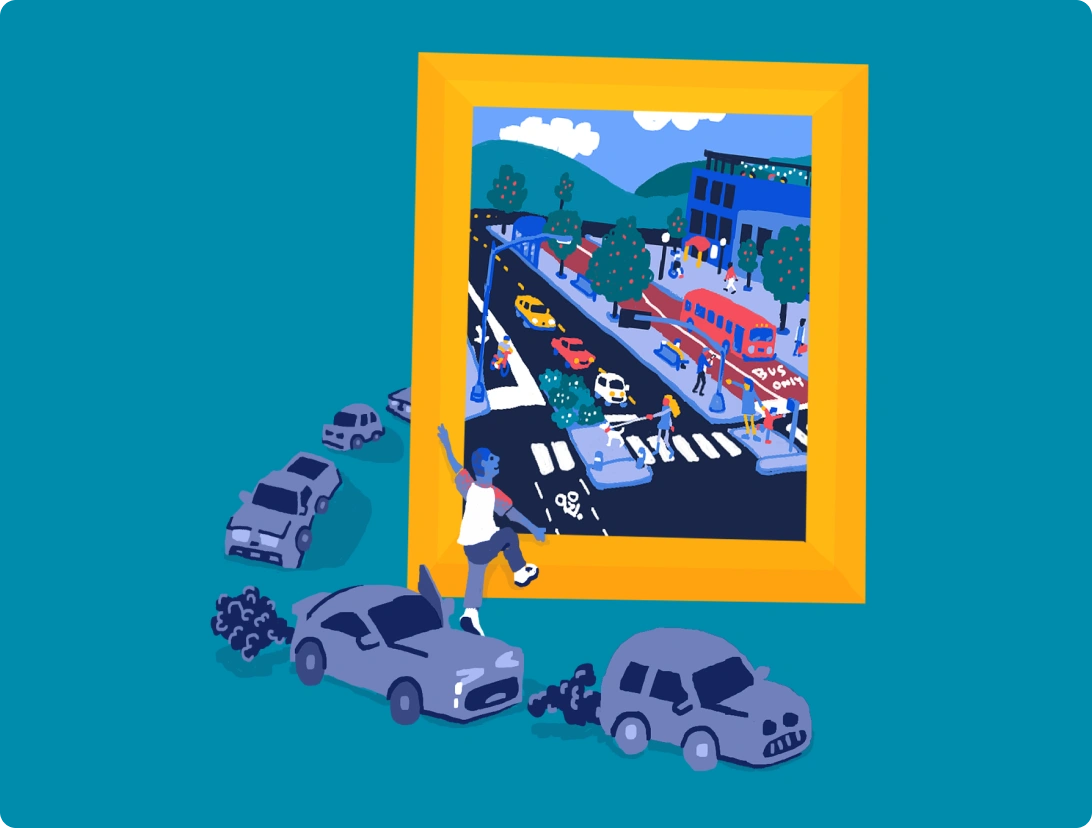
Design for safety over speed
Any serious effort to reduce deaths on our streets and roads requires slower speeds. Federal funding should require approaches and street designs that put safety first.
“We often don’t think about the fact that there are survivors, there are people who live on after someone is killed and after someone is injured. It’s not just the sheer calamity of the number of people who are killed and people who are injured; it’s all the stories, and the real people behind those stories.” – Calvin Gladney, SGA president and CEO
U.S. roads are uniquely dangerous
The U.S. stands nearly alone when it comes to the rate of traffic deaths in the developed world, where roads are continuing to get safer overall. And the deaths of people walking in the U.S. are up 75 percent since 2010, even as these deaths have fallen precipitously in the rest of the world in that time. In 2022, the share of all U.S. traffic deaths that were people outside of vehicles hit the highest share in 40 years.
Read Dangerous by Design
States control the most deadly roadways
Within the 101 largest metro areas, 66 percent of all types of traffic deaths occur on state-owned roads. In 2019, 59 percent of the deaths of people walking happened on just 13 percent of all U.S. roads—on the wide, non-interstate “arterial” roads that are almost exclusively owned and managed by state DOTs.
The most dangerous roads are state-owned
Why can’t we prioritize safety and speed?
Speed is the most important factor that determines whether or not anyone outside of a vehicle survives a collision with the driver of a car. We can make high-speed roads (like interstates) safe by limiting access and conflicts. But for any street in our cities, suburbs, or small towns that runs through an area that has numerous destinations, driveways, turns, and people crossing the street, safety and speed are truly incompatible goals.
Watch: Why safety and speed are incompatible
The crisis demands urgency
It's not a mystery—we know how to design safer streets. They don’t just have lower speed limits—they are designed in concrete ways that help produce safer behavior. We need urgent action to address this crisis and a radically different approach to how we design, build, and operate our streets. We need permanent fixes, but quick build demonstration projects can help lay the groundwork.

Federal funding does not prioritize safety
While we’ve had a specific federal “safety” program since 1973, the federal approach to safety is best understood as spending one dollar on safety improvements while spending the next 50 dollars to make the same problem worse. The federal program should require designs and approaches to transportation that put safety first.
How to prioritize safety at the federal level.Statistics
Prioritizing speed ahead of safety has come with a high price.
increase in the the deaths of people walking since 2010.
of all traffic deaths occur on federally-funded state roads.
The share of all traffic deaths from speed-related crashes.
Read recent coverage of this principle:

Our proposals for transportation reauthorization
How can policymakers turn this principle into concrete policies in the next five-year federal transportation law? Read our expanded set of policy proposals for Congress.






